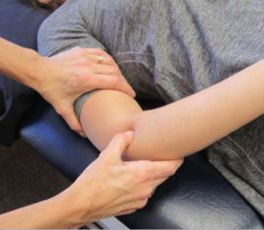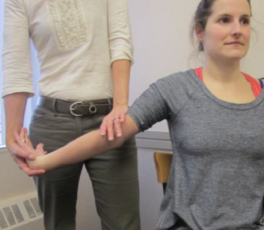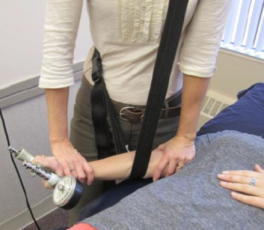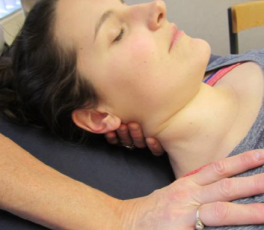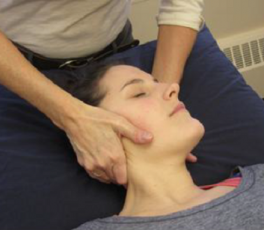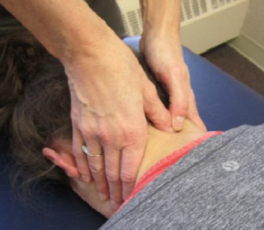Lateral Epicondyle Tendinopathy Toolkit: Section F - Manual Therapy
Toolkit Navigation
- Introduction and Background
- Summary of the Evidence
- Treatment Algorithm
- Appendix A: Details of the Articles
- Appendix B: Manual Therapy
- Appendix C: Details of Exercise Prescription
- Appendix D: LASER Dosage Calculation
- Appendix E: Braces, Splints, and Taping
- Appendix F: Outcome Measures
- Appendix G: Medical and Surgical Interventions
Cyriax-Type Physiotherapy Treatment (Viswas et al 2012[1])[edit | edit source]
Figures 1 and 2 and the accompanying descriptions are the components of this treatment approach.
|
Deep Transverse Friction Massage (DTFM)
|
Figure 1 |
|
Mill’s Manipulation
|
Figure 2 |
Elbow Mobilization with Movement (MWM)[edit | edit source]
|
Figure 3 |
Spinal Mobilization/Manipulation[edit | edit source]
|
Lateral Glide Mobilization (Vicenzino et al 1996[2])
|
Figure 4 |
|
Passive Intervertebral Mobilization (Cleland et al 2005[3]) Passive Physiological Mobilization
|
Figure 5 |
|
Passive Intervertebral Mobilization (Cleland et al 2005[3]) Passive Accessory Mobilization
|
Figure 6 |
|
Cervical Manipulative Thrust (Fernández-Carnero et al 2008[4])
|
Figure 7 |
Download Lateral Epicondyle Tendinopathy Toolkit: Appendix B - Manual Therapy[edit | edit source]
Acknowledgements[edit | edit source]
Developed by the BC Physical Therapy Tendinopathy Task Force: Dr. Joseph Anthony, Dr. Angela Fearon, Diana Hughes, Carol Kennedy, Dr. Alex Scott, Michael Yates, & Alison Hoens.
A Physical Therapy Knowledge Broker project supported by: UBC Department of Physical Therapy, Physiotherapy Association of BC, Vancouver Coastal Research Institute and Providence Healthcare Research Institute.
June 2013
References[edit | edit source]
- ↑ Viswas R, Ramachandran R, Korde Anantkumar P. Comparison of effectiveness of supervised exercise program and cyriax physiotherapy in patients with tennis elbow (lateral epicondylitis): a randomized clinical trial. The Scientific World Journal. 2012.
- ↑ Vicenzino B, Collins D, Wright A. The initial effects of a cervical spine manipulative physiotherapy treatment on the pain and dysfunction of lateral epicondylalgia. Pain. Nov 1996; 68(1): 69-74.
- ↑ 3.0 3.1 Cleland JA, Flynn TW, Palmer JA. Incorporation of manual therapy directed at the cervicothoracic spine in patients with lateral epicondylalgia: a pilot clinical trial. Journal of Manual & Manipulative Therapy. 2005; 13(3): 143-151.
- ↑ Fernández-Carnero J, Fernández-De-Las-Peñas C, et al. Immediate hypoalgesic and motor effects after a single cervical manipulation in subjects with lateral epicondylalgia. Journal of Manual & Manipulative Therapy. 2008; 31(9): 675-681.
